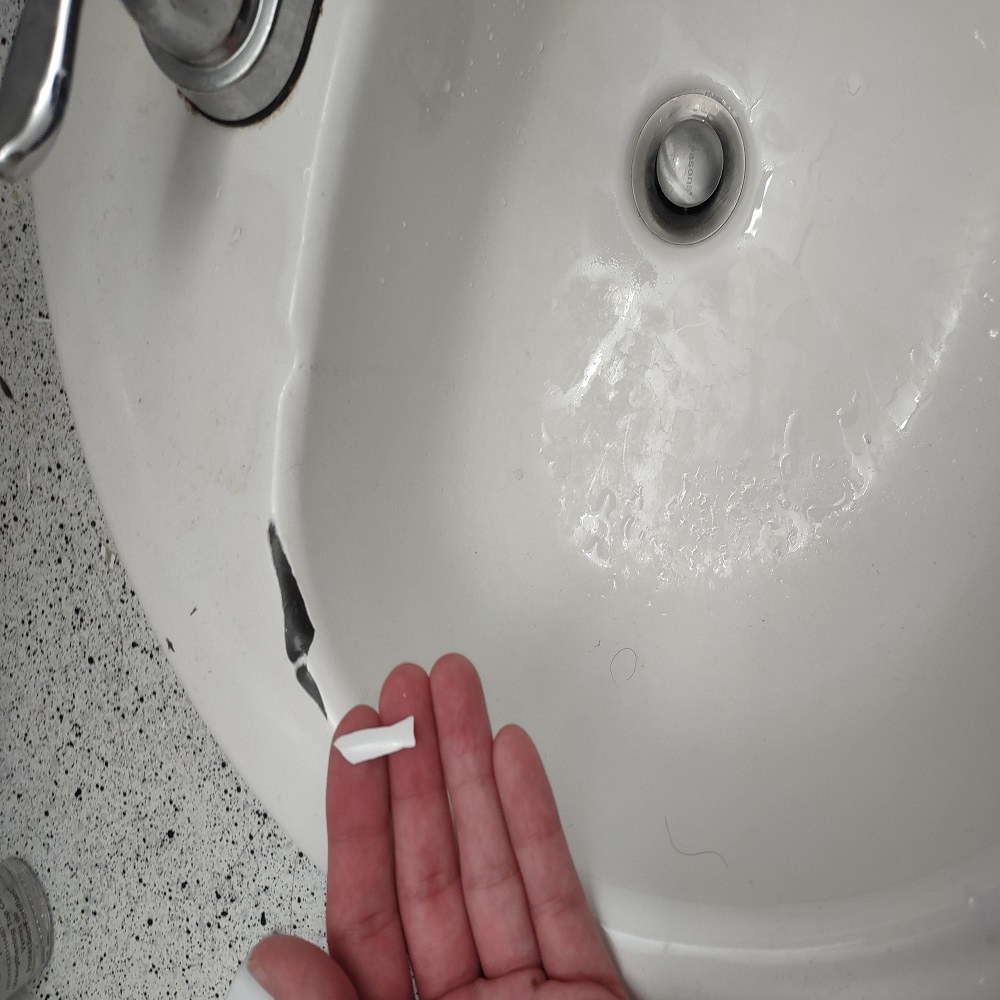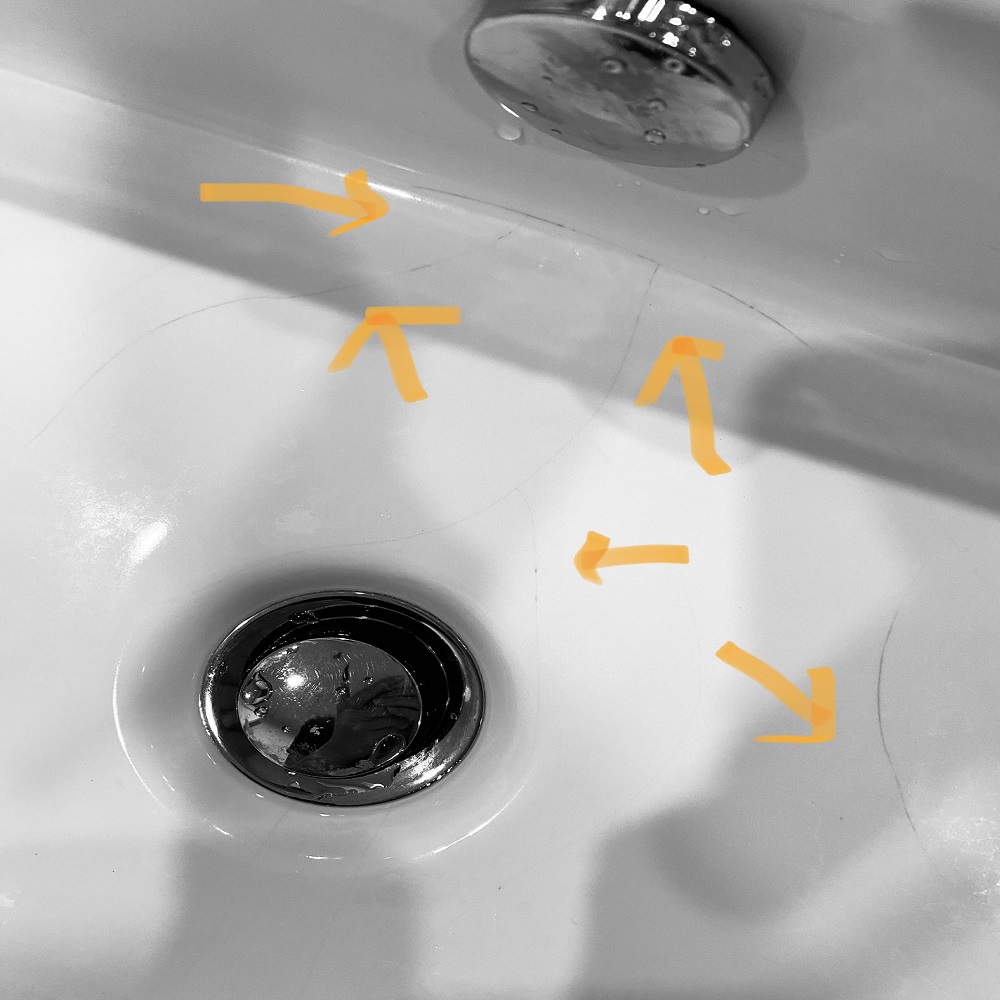Understanding Porcelain Sinks and Their Vulnerabilities
Porcelain sink crack repair, in 2024 with their glossy finish and timeless elegance, have been a popular choice in bathrooms and kitchens for decades. Their durable enamel coating resists scratches and stains, making them both practical and aesthetically pleasing. However, despite their resilience, porcelain sinks are not invincible. Over time, accidental impacts or heavy objects can cause cracks, chips, or even fractures that mar their otherwise flawless appearance. Understanding the nature of these damages and the available repair methods is essential for any homeowner seeking to restore their sink’s former glory.

Assessing the Damage: A Crucial First Step – restore porcelain sink
Before embarking on any repair journey, a thorough assessment of the damage is paramount. Small hairline cracks might seem insignificant, but if left unattended, they could gradually worsen, collecting dirt and promoting bacterial growth. Deeper cracks or large chips demand immediate attention as they can lead to leakage and compromise the sink’s structural integrity. Use a bright light and magnifying glass, if necessary, to inspect the damaged area thoroughly. Note the size, depth, and location of the crack, as this information will dictate the most suitable repair method.
The DIY Route: When and How to Tackle It – crack in sink
For minor cracks and chips, DIY repairs can be a cost-effective solution. Start by cleaning the affected area meticulously using a non-abrasive cleaner and a soft cloth to remove any dirt, soap residue, or loose debris. Allow the surface to dry completely before proceeding. Next, apply a specialized porcelain repair kit, readily available at hardware stores. These kits typically include an epoxy putty or resin, a hardener, and a color-matching guide to blend the repair with the sink’s existing hue. Follow the manufacturer’s instructions carefully, filling the crack or chip and smoothing the surface to match the sink’s contours. After curing, usually overnight, sand lightly with fine-grit sandpaper and apply a clear coat sealer for added protection and shine.
Professional Intervention for Complex Repairs
While DIY fixes can work wonders for minor issues, larger cracks or those that penetrate through the sink’s glaze might necessitate professional intervention. Professional repair services often utilize advanced techniques such as fusion welding, where heat is applied to melt a specialized filler material that bonds seamlessly with the porcelain. This method ensures not only a structurally sound repair but also a near-invisible finish. Moreover, experts can handle more extensive damage, including fractures, by employing techniques like rebonding or, in extreme cases, replacing sections of the sink. It’s crucial to weigh the cost of professional repair against the replacement cost and sentimental value of the sink.
Preventive Measures: Guarding Against Future Damage
Once your sink is restored, implementing preventive measures can minimize the likelihood of future cracks. Use a sink mat or a dish rack to cushion dishes and protect the sink’s surface from direct impact. Avoid harsh chemicals and abrasive cleaners that can weaken the glaze over time. Regular cleaning with mild detergent and warm water followed by drying will help maintain the sink’s luster and prevent water spots. Promptly addressing any signs of wear, such as minor scratches, can also prevent them from developing into cracks.

Alternative Solutions: Refinishing and Replacement
In some cases, repairing may not be feasible due to the extent of damage or if the sink’s condition has deteriorated significantly. Sink refinishing, also known as reglazing, can be a viable alternative to replacement. This process involves stripping the old finish, repairing any damage, and applying a new layer of glaze, effectively giving the sink a new lease on life. While refinishing can be more expensive than a simple repair, it’s still less costly than purchasing and installing a brand new sink. As a last resort, replacing the sink entirely might be necessary, offering an opportunity to upgrade to a newer model or a different material that better suits your needs.
Evaluating Cost and Value: Making an Informed Decision
When deciding between repair, refinishing, or replacement, it’s essential to weigh the costs against the value each option provides. DIY repairs are the most budget-friendly but may not yield long-lasting results for severe damage. Professional repairs offer durability but come at a higher upfront cost. Refinishing is a middle ground, rejuvenating the sink’s appearance without replacement’s hassle. Ultimately, considering factors such as the sink’s sentimental value, the cost-benefit analysis, and the desired outcome will guide you towards the best course of action.

Assessing the Damage
- Identifying the Crack:
- Inspect the sink to determine the extent of the crack. Small hairline cracks may only require cosmetic repairs, while larger cracks affecting the sink’s structural integrity may need more extensive repair.
- Types of Cracks:
- Surface Cracks: These are minor, superficial cracks that do not penetrate deep into the porcelain. They are usually cosmetic and easier to repair.
- Deep Cracks: These extend through the porcelain and may require filling and reinforcement to prevent further damage.
Repair Methods
For Hairline and Surface Cracks:
- Epoxy or Porcelain Repair Kit:
- Clean the area around the crack thoroughly with soap and water. Rinse and dry completely.
- Apply a porcelain repair epoxy or filler designed specifically for sinks. These materials often come in kits with detailed instructions.
- Use a toothpick or small brush to apply the epoxy along the crack. Smooth it out to ensure it fills the crack completely.
- Allow the epoxy to cure as per the manufacturer’s instructions. Typically, this involves letting it dry for several hours or overnight.
- Once cured, gently sand the repaired area to blend it with the surrounding porcelain. Use fine-grit sandpaper (400-600 grit) for a smooth finish.
- Clean the area again to remove any dust or debris.
- Touch-Up Paint:
- If the repaired area is discolored or doesn’t match the original porcelain color, use touch-up porcelain paint. This helps blend the repair with the rest of the sink.
- Apply the touch-up paint in thin layers, allowing each layer to dry completely before applying the next. Follow the manufacturer’s instructions for drying times.
For Larger or Deeper Cracks:
- Fiberglass Patch and Epoxy:
- Clean and dry the cracked area thoroughly.
- Cut a piece of fiberglass cloth slightly larger than the crack.
- Apply epoxy resin to the crack and press the fiberglass cloth into the epoxy.
- Apply additional layers of epoxy resin over the fiberglass cloth, ensuring it is fully saturated and smoothed out.
- Allow the epoxy to cure completely according to the manufacturer’s instructions.
- Once cured, sand the repaired area to achieve a smooth finish.
- Apply touch-up paint as needed to match the color of the sink.
Tips for Successful Repair
- Safety Precautions: Wear gloves and eye protection when working with epoxy and chemicals.
- Surface Preparation: Properly clean and dry the area before applying any repair materials to ensure adhesion.
- Follow Instructions: Always follow the manufacturer’s instructions for the repair materials and allow adequate curing time.
- Avoid Harsh Cleaners: After repair, use mild cleaners to avoid damaging the repaired area.
Preventive Measures
- Avoid Thermal Shock: Do not pour boiling water directly into a cold porcelain sink, as this can cause cracks.
- Gentle Use: Handle heavy objects with care to avoid impact damage.
- Regular Maintenance: Clean your sink regularly and inspect for any signs of damage to address issues early.
Innovative Materials and Designs for Future-Proof Sinks
As technology advances, so do the materials and designs used in manufacturing sinks, providing homeowners with more options to enhance functionality and aesthetics while improving durability. Here are some innovations to consider when upgrading or replacing your sink:
- Stainless Steel Evolution: While stainless steel has been a popular choice for its durability and easy maintenance, newer formulations now offer enhanced resistance to scratches and stains. Some high-end models feature noise-reducing insulation and a brushed finish that hides scratches better.
- Composite Materials: Sinks made from composite materials like granite or quartz composites blend natural stone particles with resin for a tough, non-porous surface that resists chips, scratches, and stains. These sinks come in various colors to match any kitchen or bathroom decor and offer excellent heat resistance.
- Ceramic with Advanced Glazes: Ceramic sinks now boast advanced glazing techniques that make them even more resistant to chipping and scratches. Some manufacturers apply antibacterial coatings to the surface, adding an extra layer of hygiene to your kitchen or bathroom.
- Smart Sinks: Integrating technology into sink design, smart sinks can include features like touchless faucets, which help reduce the spread of germs, built-in LED lighting for task illumination, and even sensors that monitor water usage for eco-conscious living.
- Flexible Design Options: Customization is key, with manufacturers offering sinks in various shapes, sizes, and installation options (undermount, drop-in, or farmhouse styles) to fit any space and design preference seamlessly.
 Conclusion: Reviving Your Porcelain Sink’s Charm
Conclusion: Reviving Your Porcelain Sink’s Charm
A cracked or chipped porcelain sink need not spell the end of its functional or aesthetic life. Whether opting for a DIY fix, enlisting professional help, or exploring refinishing or replacement, there are numerous paths to restoration. The key lies in a meticulous assessment of the damage, understanding the available repair methods, and making an informed decision based on the sink’s condition, personal preferences, and budget considerations. With the right approach, your once-damaged porcelain sink can regain its former beauty, serving as a testament to the art of revival and restoration.


